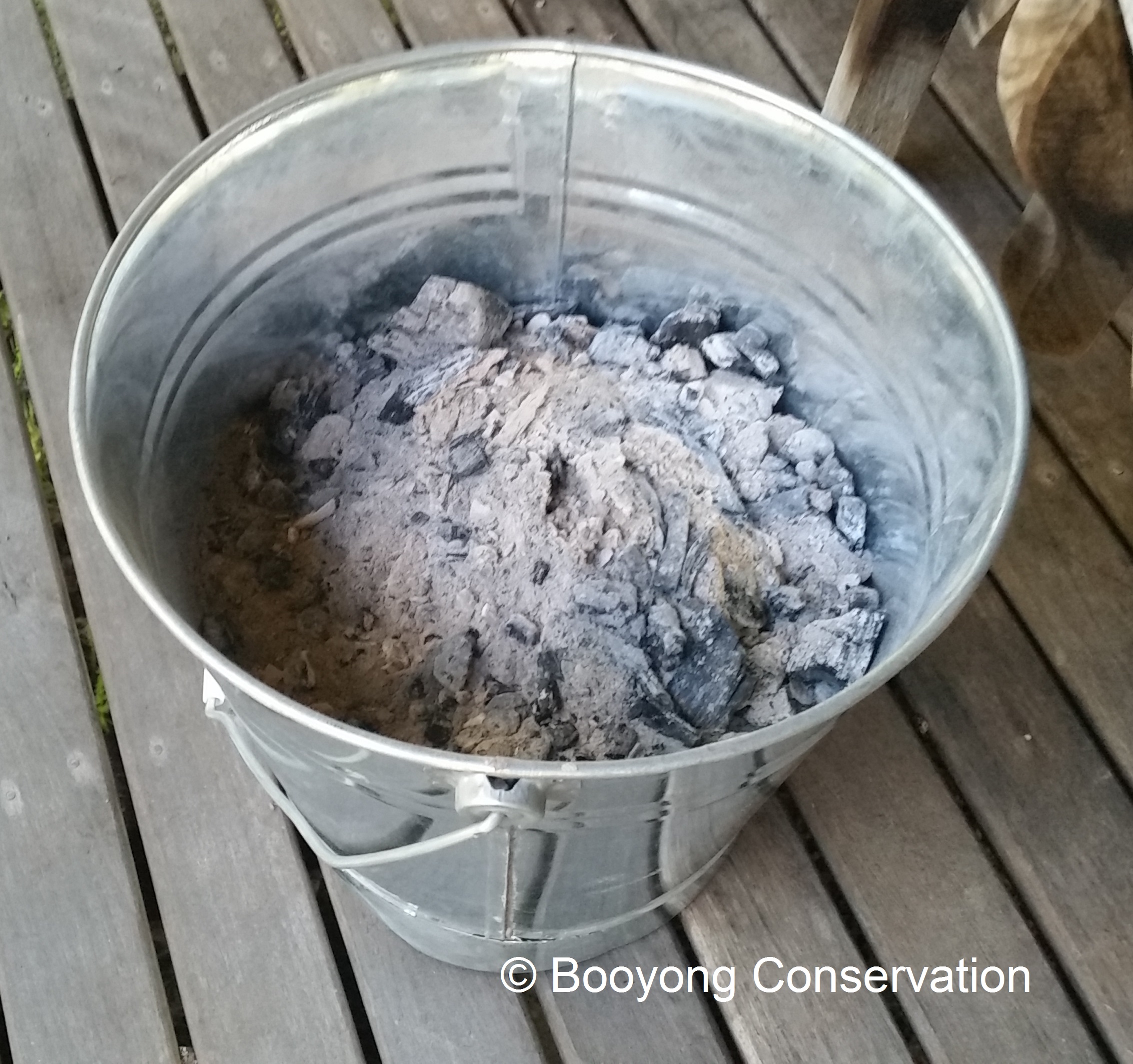The fires are burning at Booyong and we have recently purchased a tin bucket to collect potash from the fire place for the garden and other uses. Wood is derived from plant material and contains most of the essential nutrients required for plant growth. When it burns, nitrogen and sulphur are lost and calcium, potassium and magnesium remain and the quality of the wood is reflected in the quality of the potash.
It needs to be kept dry and can burn when hot, retains its heat and was traditionally used to make lye for soap. This is why it must not get wet when hot and is safely kept in a tin bucket with a lid.
Potash increases the alkalinity of the soil and a shovel full per square metre can be dug into heavy clay soils (of which Booyong is). Plants that like the ash include onion, garlic, chives, shallots, beans, lettuce, peas, asparagus, brassicas, coffee and stone fruit. You can spread it around the base of apple trees, peaches, plums, cherries and apricots, using a tin with holes in the bottom to sprinkle it evenly. However, it should not be used around acid loving plants like blueberries, pecans, azaleas (secretly I don’t mind if Bob accidently kills his azaleas as they are not really my favourite), potatoes or marigolds. It is also important not to put it on young seedlings or green foliage because it will burn.
Small amounts can be added to the compost and some added to veggie beds to deter slugs from attacking seedlings.
A tray of cooled potash can also be placed in the chicken pen for them to bath in and help control mites and lice.
Around the home, potash can be mixed with water to make a paste and used to clean the glass of the fire place or oven. The paste can also be used to clean the kitchen sink. It was previously used to clean teeth, however these days baking soda is the better natural option.
Everything can be reused and have so many more benefits around the property – this research makes me so happy!
